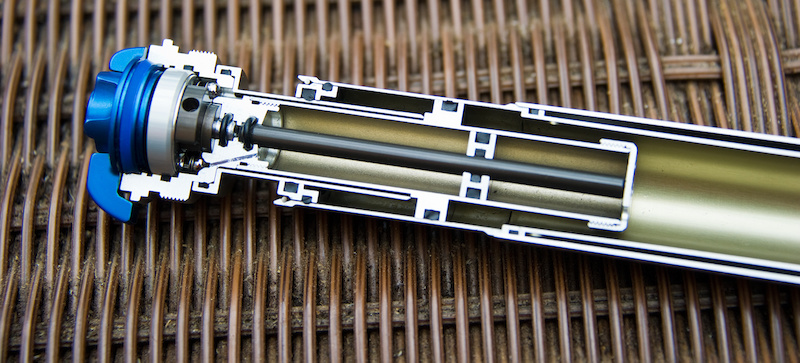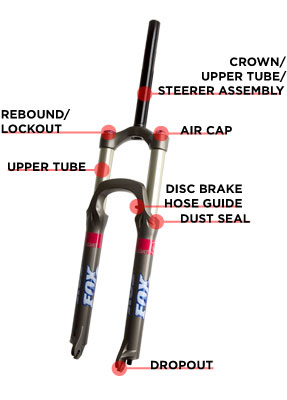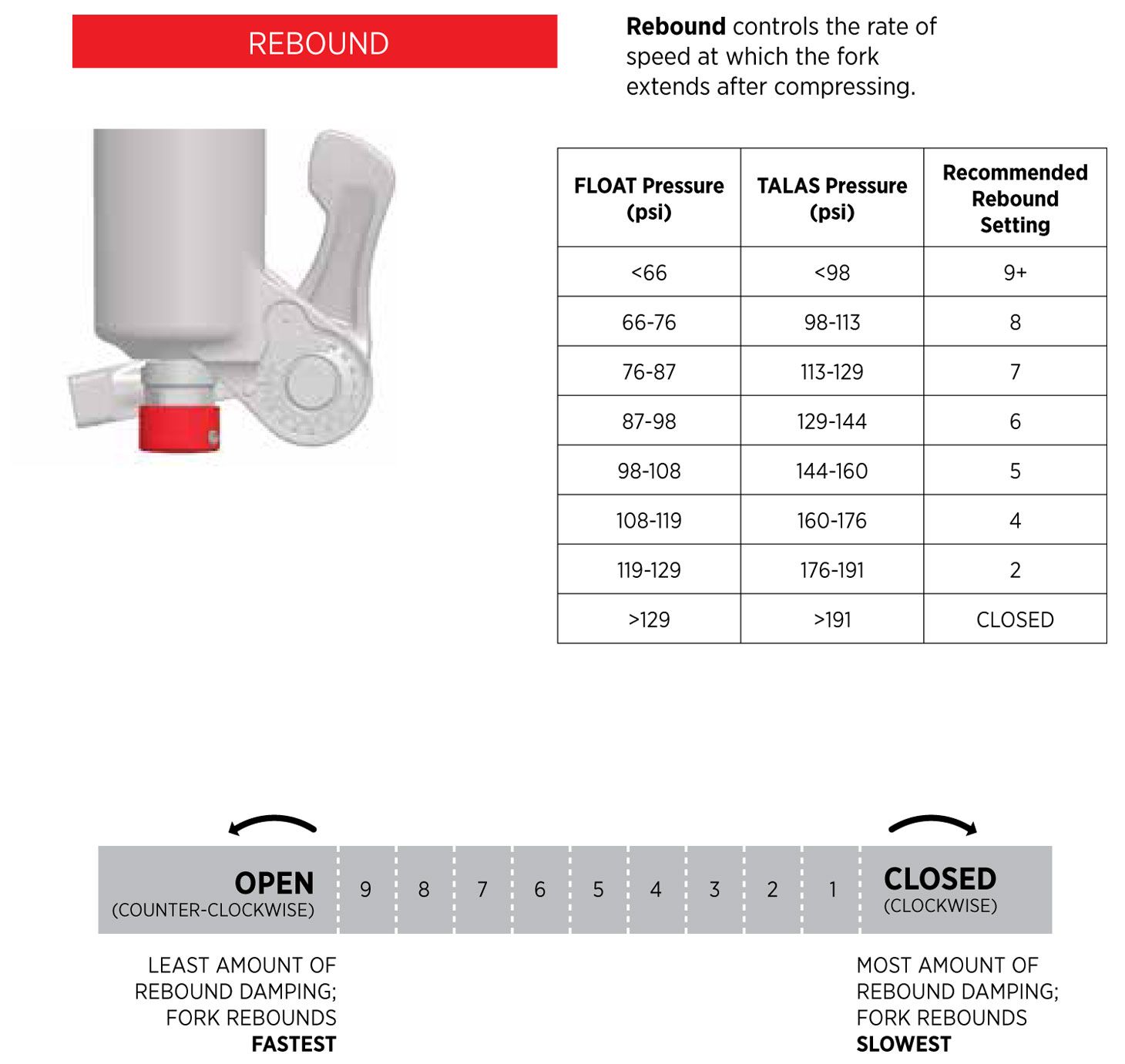2011 Fox Talas 32 Fit Rlc Manual
I just mounted a 2011 FOX 32 FLOAT 140 RLC FIT on my Ibis Mojo SL and I'd have to say I'm somewhat disappointed in the performance right out of the box. Obviously these things have to be fined tuned, so maybe you all could point out what I'm doing wrong. The plan was to set the fork up more towards the All Mountain, plusher mode rather than the pure XC, stiffer mode. Then I would use the lockout as a platform for those occasions when I wanted something a bit more racer. For actual races (like maybe 5 times a year), I would bump the sag up a bit.
2011 Fox Talas 32 Fit Rlc Service
This fork is replacing a Manitou Minute MRD that was deemed somewhat unreliable. So, I'm comparing the fork to that and a Talas I had recently. I've got a SID SL 100 on my hardtail, but the SID is not really in the same class. BTW.I way about 165 LBS (175 with gear and hydration back) and consider myself to be a smooth rider, but do like to throw the back around a bit. I set the Sag as instructed by Fox at 72 PSI to achieve 30 mm of sag. With the bike set up like this, I have already got what appears to be full travel out of the fork.
I didn't actually measure it, but the ziptie was pushed nearly all the way up after front wheel landing a decent size jump. I would say the travel and smoothness of the stroke are on par with the MRD and way better than the Talas or SID (of course).


I cannot detect any difference in fork stiffness between this fork, the Talas or the Minute MRD. Note: I immediately notice the bike sits up a bit higher, so I adjust the seat tilt ever so slightly and move the seat forward about a half centimeter. In the factory setting, the rebound seemed a bit too fast. To be honest, I have not had problems with rebound on any fork made after maybe 1995 and this was no different after I slowed it down a few clicks. The low speed compression leaves a lot to be desired. All the way open or all the way closed, I can barely detect any difference. The forks small bump compliance is awful compared to the MRD and Talas and even the SID SL pumped up racer boy stiff.
The lockout works flawlessly. Again, I cannot remember a fork where the lockout din't work consistently well all the back to maybe a 1998 SID SL that had the occasion issue. The lockout force adjust also had no affect at all. I tried it all the way open, all the way closed and several in between positions and I could not get the lockout to blow off. Trust me, I gave it my all on a 4 or 5 foot drop. Could the low speed compression and lock out force adjuster be related?
Tomorrow, I'm going to try setting the sag even lower to see if I can get the lockout to behave like a platform. Some people say these forks have to be broken in a bit, so I'm hoping that is the case with this one. I've had my 2011 float 140 rlc for almost a year now, and I have changed oil in the lowers twice and I still cannot get full travel. Missing that last inch of travel.
If I let all the air out, I can compress it all the way down. I don't get it.
Any fixes out there?Let your air pressure down. I wouldn't mod a 2011 fork. By all accounts they are much more linear than the 08 models which the mod was based on.My 2011 F29 100 certainly is. I'm 170 lbs and ride about 50 to 55 psi on 09 Float 140 and other fox forks.
I get close to full travel on all of them. Many do the same. Can't remember what sag that is but probably around 25 to 30%. Let your air pressure down. I wouldn't mod a 2011 fork.
By all accounts they are much more linear than the 08 models which the mod was based on.My 2011 F29 100 certainly is. I'm 170 lbs and ride about 50 to 55 psi on 09 Float 140 and other fox forks.
I get close to full travel on all of them. Many do the same. Can't remember what sag that is but probably around 25 to 30%.Once the fork is modded, it's very easy to adjust the progression by adding or removing oil from the air chamber. If you do the mod and decide you don't like it, you can always undo it by adding 1cc of oil for each mm you cut from the air shaft. I'll post this question here as I'm not into searching back to find a more relevant thread.
I've got a '11 Talas 36 RLC. Been riding it for a year and its pretty good. My main complaint is I like how plush it is with low compression but then I have too much brake dive.

If I up the compression to lessen brake dive then the fork rides too harsh. I'm probably going to go with a Float conversion soon. Question is if I add more fluid to make fork more progressive, will I be able to lower air pressure to make it more small bump compliant and with it being more progressive will I have less brake dive? This goes for both Talas and Float. Also, I've talked to PUSH about what they can do on the RLC forks and they say they can't really do anything on them. The only mod they do is use lower weight oil. What does this do?
Bad mechanic will be able to add more. Lower oil weight is similar to reshimming your fork and lowers all high, low speed compression and rebound. You can then tune back low speed compression and rebound with the adjusters leaving you with lower high speed compression setting. Push may feel high speed compression shims are limiting fork travel. In this case you can use lower weight oil, higher air pressure and and possibly higher low speed compression to balance out fork dive.
In some forks I've down this and the opposite heavier oil /lower air pressure. Both have worked. Just depends on how fork is initially shimmed. It looks like Push think lighter oil works for this fork. I wouldn't do the mod. It's really for earlier 32mm forks. 2011 forks are much better.
Try only 2 - 3mls of oil in air cartridge side first. Also look at your shock setting to. To high shock pressure transfers your weight on to the fork in the corners.
Fork dive can also be a mind set to.Some don't seem to be able to tolerate any at all. A bit of weight shifting can usually negate drastic head angle changes. On earlier bikes with straight steerers and QR axle then fork dive translted in to a squimy feel. Not so on my latest bikes with tapered fork and 15mm axle. Once the fork is modded, it's very easy to adjust the progression by adding or removing oil from the air chamber. If you do the mod and decide you don't like it, you can always undo it by adding 1cc of oil for each mm you cut from the air shaft.There shouldn't be any need.
I've done it to an 08 float but,out of the box, I can get full travel out of my 2011 forks.The mod is not absolutely straight fwd and there is potential to get it wrong and add stiction to your forks if your drilling skills are not the best. By and large it's air pressure tht most have a problem with in the latest generation. Mostt need to use sag, not recommended air pressures, to tune their forks. These single air forks air extremely sensitive to air pressure. Two to three psi can change the feel of the fork. Lower pressures 5 psi at a time to get low speed feel in to the forks.
Balance the bike with both shock and fork air pressures so the shock doesn't push the bike on to the fork in corners. Build a tolerance to fork dive. It can be a mindset in some people. You don't need full travel just close. Some progression is beneficial to how a fork handles the big stuff.
Don't get hung up on travel but quality of travel. I'm had some 140mm forks which were rubbish in the big stuff compared to other 120mm forks. It appears Push may lower oil weight on some RLC's to lower high speed compression? So that and and lower oil level in air chamber could be simple tweaks. There shouldn't be any need. I've done it to an 08 float but,out of the box, I can get full travel out of my 2011 forks.The mod is not absolutely straight fwd and there is potential to get it wrong and add stiction to your forks if your drilling skills are not the best.Tree isn't getting full travel on his 2011.
Regardless that Fox reduced the shaft by 9mm, it's apparently still not enough for Tree's liking, and the solution is the air shaft mod. Even before Fox shortened the shaft, owners were shortening them more than the 9mm Fox did; I've seen up to 20mm cut off. Did not mean to start a war, but all the info is great. Let me give a little history of my experience with fox forks.
If you are an ARGUS Valuation DCF user, please contact your ARGUS Account Manager. Importing DCF 15 Files. Workstation Quick Start/Installation Guide. Oct 9, 2008 - The companion User Manual supplied with the software offers a. ARGUS Valuation-Capitalisation version 2.50 Step-by-Step Guide. Apr 25, 2011 - ARGUS Valuation - DCF was formerly known as ARGUS. This manual has been prepared for use by ARGUS Software. Apr 10, 2017 - Product User Manual. ARGUS Enterprise 11.6.0. Information in this document is. Printing/Exporting Reports. Argus 15 reference manual. Apr 25, 2011 - ARGUS Valuation - DCF Step-By Step Guide. This manual has been prepared for use by ARGUS Software personnel, licensees and. Global Categories. And provides a user-friendly interface for basic data input.
This is my first air Fox fork. I have had several previous years of Fox's, but coil versions. My riding weight, all geared up is right around the 180lb mark and the fork is mounted on a Tracer VP. The 2011, 140mm RLC Float has about 65psi with a few clicks of LSC.
I never use the lockout. Still missing about an inch of travel. I have intentionally looked for large hits to try and get all the travel with no luck.